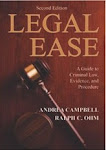I located another story about gang members in South Africa, who used their camera phones for finding victims. Apparently they would take pictures of bank customers who had withdrawn large sums of money. A gang member outside would stake the person and eventually rob them. Police officials there, want to ban cell phones in banks.
Since I write about crime and forensic science, I have wondered about this question myself? Am I, too, providing information to help criminals?
I don’t know that there is a definitive answer. I mean, if we’re talking about drug-related crimes committed by stoners, probably not. But I’ve often heard it said that most information about how to “best the government” goes on in our very own jails and prisons. I’m told that inmates share information and even teach techniques and ideas to anyone who will listen. So how does this play out in real life? I can’t say and I don’t know of any reliable studies that could even be performed because it is the very definition of underground information.
Thankfully, a lot of the gizmos and crime scene techniques that are shown on television come from the fruitful imagination of the writers. Most of my friends and colleagues in law enforcement and forensic science claim they don’t watch the CSI-type shows because they cannot suspend their disbelief enough to enjoy them. And, to them, crime is not entertainment but tragedies they must deal with every day.
I think the solution to staying on the cutting edge is on-going all the time in the form of research and technology. There are rewards and benefits for companies that launch crime-prevention and crime-busting aids. Just recently USA TODAY ran a piece about a new device that the Homeland Security Department would like to issue to its federal agents.
It looks like a flashlight and emits a powerful beam of light that temporarily blinds anyone who looks in
 to it. A hefty $1 million dollars of testing money is going into the LED (light-emiting diode) Incapacitator. And they have volunteers lined up at Pennsylvania State University’s Institute of Non-Lethal Defense Technologies. (“So, what did you do today, honey?” “Well, I had my eyes burned up, my brains scrambled and got sickened by light pulses and colors!”)
to it. A hefty $1 million dollars of testing money is going into the LED (light-emiting diode) Incapacitator. And they have volunteers lined up at Pennsylvania State University’s Institute of Non-Lethal Defense Technologies. (“So, what did you do today, honey?” “Well, I had my eyes burned up, my brains scrambled and got sickened by light pulses and colors!”)The main thing that law enforcement looks for in a device, believe it or not, are tools that give authorities enough time to tackle subjects and restrain them, while sparing the lives of innocents nearby. They need tools to disorient and stop perpetrators, while preserving life. No small task.
I, personally, love reading about the new devices and think this one is especially interesting. The problem will become however, how to keep them out of the hands of the black market. Once they are mass-produced and come down in costs, then you’re on the road again, looking for more tricks.





4 comments:
I was interested in the discussion that perhaps television shows and other media could possibly educate criminals in how to destroy evidence and conceal crimes.
After some thought, I realize that the majority of homicides are not planned events. They are usually crimes of circumstance, such as robberies gone bad, or anger driven events such as gang shootings or domestic violence. Rarely do these murderers have the plan or the time to clean up a crime scene.
However, that is not to say that it does not happen. Usually when a criminal tries to clean up a crime scene, more evidence is created. Such as in the case you cited, bleach may be used to destroy DNA, but now there is a bleach bottle with fingerprints and possibly DNA to contend with. This is just an example, but in my experience, destroying evidence creates more evidence, in most cases.
Bad guys have been concealing crimes since crime was invented. There are hundreds of books on the market discussing crime scene investigation, if a criminal wanted to learn the techniques. If someone wants to know how to destroy evidence, the information is out there in many forms, not just television.
Thanks,
Brian
Brim over I agree but I dream the post should acquire more info then it has.
common is just a TV show, all their ideas are just fiction, and haves a low rate of success.
Agreed but the post should have acquired more of information.
Post a Comment